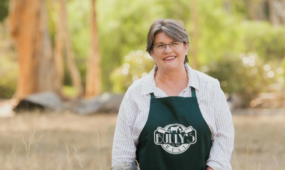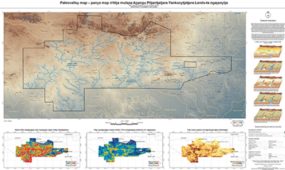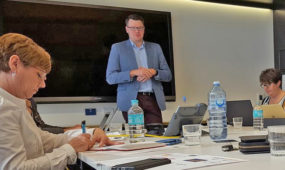Experts say Mt Lofty Ranges are unique enough to be on World Heritage list
Ideas
SOUTH Australia’s unique history of colonisation could help in the

Sign up to receive notifications about new stories in this category.
Thank you for subscribing to story notifications.
bid to have the Mt Lofty Ranges recognised on the international heritage list and lead to huge economic benefits.
Speaking before a lecture by international heritage expert James Rebanks, the project manager of the Mount Lofty Ranges World Heritage bid Stephanie Johnston said history played an important role in the bid.
Johnston said the state's history of being a free settlement founded on the principle of “systematic colonization” was unique in the world and has helped preserve the diversity of the area bordering Adelaide.
“South Australia was the first place in the world to apply the colonisation model developed by Edward Gibbon Wakefield, and its systematic approach was the first attempt since the time of the ancient Greeks to colonise systematically,” said Johnston.
Edward Gibbon Wakefield's theories about how settlements and colonies should be established were adopted by the founders of South Australia.
Johnston said the Mount Lofty Ranges’ story is as valid and important as any of the current sites on the UNESCO World Heritage list.
“The Mount Lofty Ranges is pursuing listing for its agrarian landscape values associated with a ground-breaking 19th century model of colonisation,” she said.
Being listed as a World Heritage site would have substantial economic rewards, according to James Rebanks, who i
UNESCO World Heritage sites attract the ‘cultural tourist,’ typically affluent with refined tastes and intellectual appetites.
“Cultural tourists know these sites are super special, they stay longer, want to experience quality of product and accommodation, and they want to get under the skin of a place,” said Rebanks.
He predicts the Mount Lofty Ranges will be no different and cites the working agricultural landscape and wine and culinary attractions as major drawcards for international visitors.
A successful bid would lead to global attention. Done well this can convert into dollars in pockets for the local producers in the area which spans up to 150,000 hectares from the Fleurieu Peninsula to the Barossa Valley.
“A UNESCO World Heritage listing galvanises effort and investment to look after a place,” said Rebanks. “In the past ten years people have started caring about conservation of landscape, they recognise this as key to survival to conserve agricultural business.”
Working agrarian landscapes already on the list include the Val d'Orcia in Tuscany, Portugal's Alto Duoro Valley, Hungary's Tokaj wine region and Mexico's famous tequila-producing area of Jalisco.
The Mount Lofty Ranges can also look to places like Italy’s Cinque Terre for inspiration.
The area is an example of an agricultural site on the UNESCO World Heritage list done well.
Visitors can work on the farms, while the tourism information centres sell and export UNESCO World Heritage branded produce giving back to the local producers in the area who have returned to farm the terraces again.
Just like their Italian counterparts, a successful listing for the Mount Lofty Ranges would ignite pride of place and bolster community and producer attitudes. It also means the Ranges would join only 12 other agricultural sites in the world awarded the prestigious listing.
“Based on financial formulas of other UNESCO sites, we predict 'provenance premiums' to attract significant mark ups on produce purchased within the protected site compared to the same product outside the area,” Rebanks said.
According to Rebanks, the South Australia capital city of Adelaide, which sits right on the fringe of the area, would benefit from the listing as well.
“Like many cities around the world, what we buy in the city is influenced by what we grow in the country, but by having countryside nearby it helps define who we are as a city and how we differ from other cities around the world as there are no boundaries,” he said.
Professor Randy Stringer from the University of Adelaide's School of Agriculture, Food and Wine and the Environment Institute lead an 18 month study into the Mount Lofty Ranges bid funded by the region’s respective councils; the Adelaide Hills, The Barossa, District Council of Mount Barker and the City of Onkaparinga.
“World Heritage listing for agricultural landscapes is very rare, and rarer still for working, evolving agricultural landscapes,” he said. “Achieving World Heritage site status would aim to conserve the unique qualities of the Mount Lofty Ranges, not just for future generations of Australians, but also for the world.”
“This would not be seen as turning the Ranges into a museum, but protecting its status as a working, growing, changing landscape under local planning control,” said Professor Stringer.
While the announcement is still ten years away, being endorsed by 190 countries would be an enormous boost for the region, giving it touristic acclaim in line with the likes of Machu Picchu or the Pyramids.
According to Rebanks lots of good can come from this bid, however it is the effort that follows to make the UNESCO World Heritage listing work as a tourism platform that counts. The process alone is valuable whether successful or not.
Above all, UNESCO World Heritage sites learn how to make their experiences, “both consumerable and accessible as a destination,” said Rebanks.
Jump to next article



